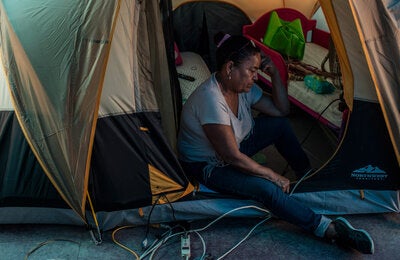

Top health officials from North, Central and South America and the Caribbean have endorsed a series of actions that the Pan American Health Organization/World Health Organization (PAHO/WHO) says could significantly reduce the public health impact of alcohol.
In the Americas, alcohol consumption is linked to nearly 350,000 deaths annually
Washington, D.C, 30 September 2011 (PAHO/WHO) — Top health officials from North, Central and South America and the Caribbean have endorsed a series of actions that the Pan American Health Organization/World Health Organization (PAHO/WHO) says could significantly reduce the public health impact of alcohol.
Ministers of health and their representatives at PAHO's 51st Directing Council approved a new Plan of Action to Reduce the Harmful Use of Alcohol that seeks to lower levels of per-capita alcohol consumption and reduce alcohol-related harm. It includes measures ranging from increased taxes on alcohol sales and restrictions on marketing to training for primary health care workers in screening and treatment for risky drinkers.

According to WHO data, alcohol consumption was the leading risk factor for deaths and illnesses in the Americas in 2004 and was responsible for more than 347,000 deaths.
The most common pattern of consumption in the hemisphere is the most risky pattern: heavy episodic drinking, mostly by males. This leads to acute and chronic health problems including injuries, mental health disorders, cancers, heart disease, hypertension and diabetes. It also negatively affects people other than the drinker, such as victims of drunk-driving car crashes and alcohol-related violence.
"For public health, the big issue is not alcoholism; it's the quantity and pattern of consumption," says Dr. Maristela Monteiro, PAHO/WHO's top expert on alcohol and substance abuse. "The major impact is from over-consumption and risky drinking by people who are not alcoholics. This is what underlies most alcohol-related injuries, illnesses and deaths."
Monteiro and other alcohol experts say that the drinking pattern that could have a beneficial impact—occasional consumption of limited amounts of alcohol and no episodes of excessive drinking—applies primarily to people 45 years of age and older, and that this pattern in fact may be harmful among other age groups. "In any case, low-risk drinking is not the prevailing pattern in most of the countries of our hemisphere," she says.
The plan of action approved this week calls for countries—with PAHO/WHO technical support—to take actions including:
Set low legal limits on blood-alcohol levels for drinking-and-driving violations and ensure quick and effective consequences for people caught driving with higher levels.
Use taxation and pricing to decrease the harmful use of alcohol, for example, through sales taxes based on alcohol content or special taxes on beverages targeted at youths.
Consider dedicating some alcohol-tax revenues to prevention and treatment as well as public health counter-advertising.
Reduce the availability of alcohol through restrictions on age, type of outlets, and hours for the sale and purchase of alcohol.
Ban the sale of alcohol to intoxicated persons and promote bar-owner liability for alcohol-related violence and injuries resulting from intoxication that occurs on their premises.
Limit the marketing of alcoholic beverages, especially to young people and vulnerable groups. Monitor industry compliance with voluntary codes of conduct.
Train health-care providers to detect, prevent, treat and rehabilitate men and women—including pregnant women—suffering from harmful use of alcohol in primary health care and across the health system.
Promote prevention and interventions in the workplace, on college campuses, and other places where there is a high concentration of drinking and/or alcohol-related problems.
Provide supportive environments in schools, communities, and other social settings to protect people from the harmful use of alcohol.
Promote research on the health and social effects of harmful drinking on men, women, and different ethnic groups as well as the effects on human capital and economic development.
Involve other sectors, including education, labor, transportation, law enforcement and the criminal justice system to increase public awareness about the harmful consumption of alcohol.
The 51st Directing Council also approved a new Plan of Action on Psychoactive Substance Use and Public Health, focused on prevention, screening, early intervention, treatment, rehabilitation, social reintegration, and other health services to reduce the negative consequences of substance use.
PAHO was established in 1902 and is the world's oldest international public health organization. It works with all the countries of the Americas to improve the health and quality of life of the people of the Americas and serves as the Regional Office for the Americas of the World Health Organization (WHO).
Media Contacts:
Donna Eberwine-Villagran +1 202 316 5469, eberwind@paho.org | Leticia Linn +1 202 701 4005, linnl@paho.org | Sonia Mey +1 202 251 2646, maysonia@paho.org
Links:



